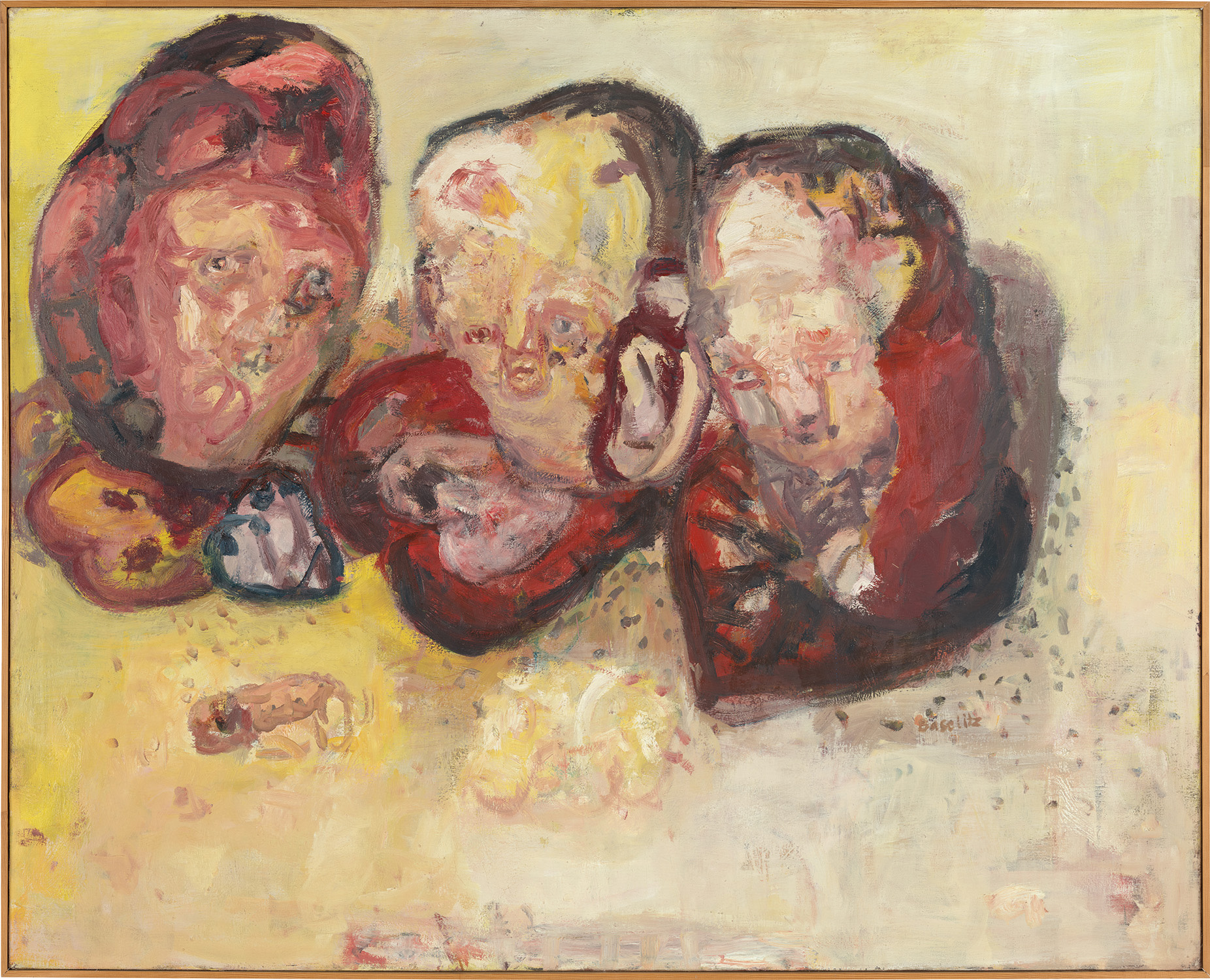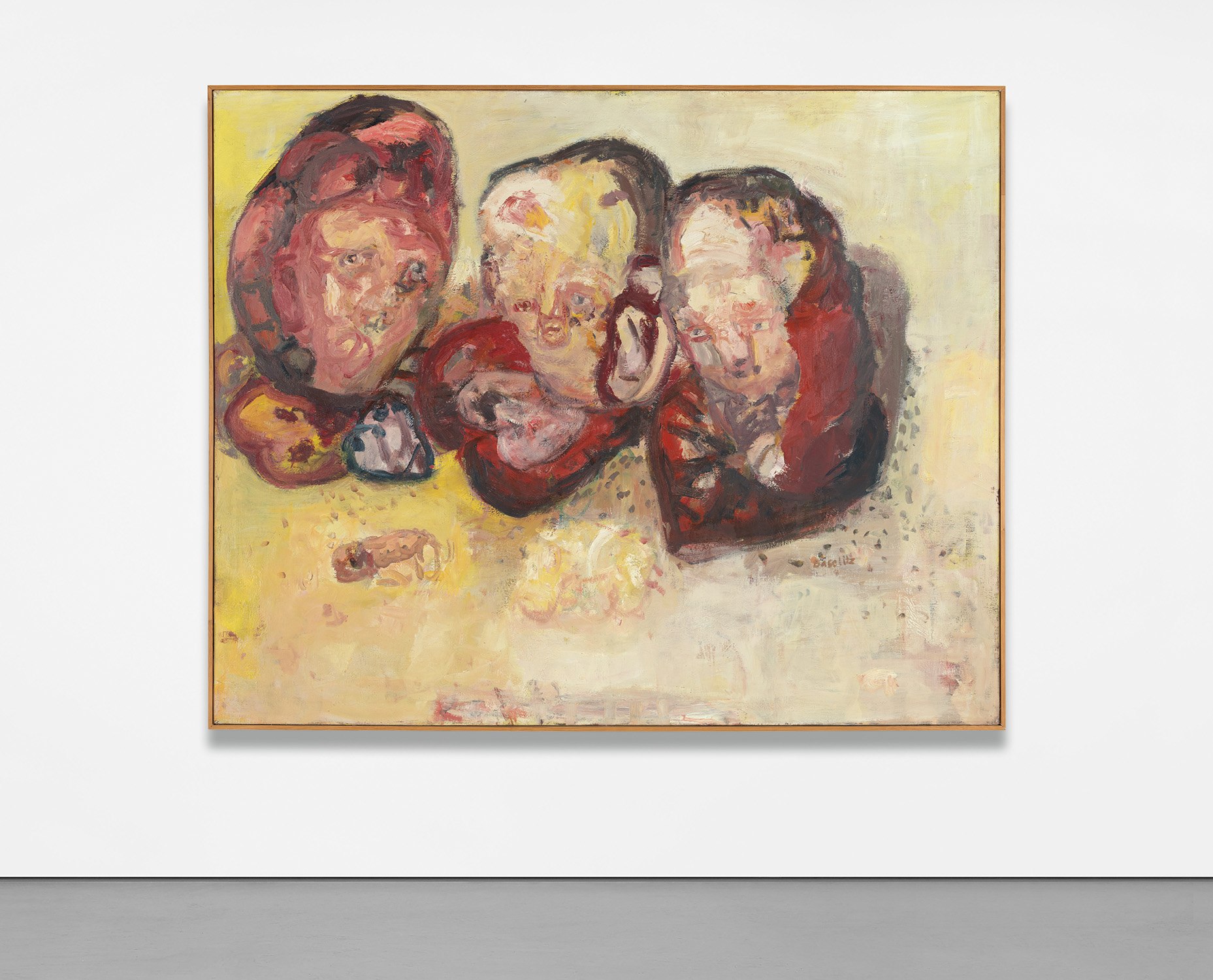



Property from the Olbricht Collection
37
Georg Baselitz
Drei Herzen (Three Hearts)
signed "Baselitz" lower right; signed with the artist’s initials, titled and dated “G.B. drei Herzen 1963” on the stretcher
oil on canvas
51 1/4 x 64 7/8 in. (130.2 x 164.8 cm)
Painted in 1963.